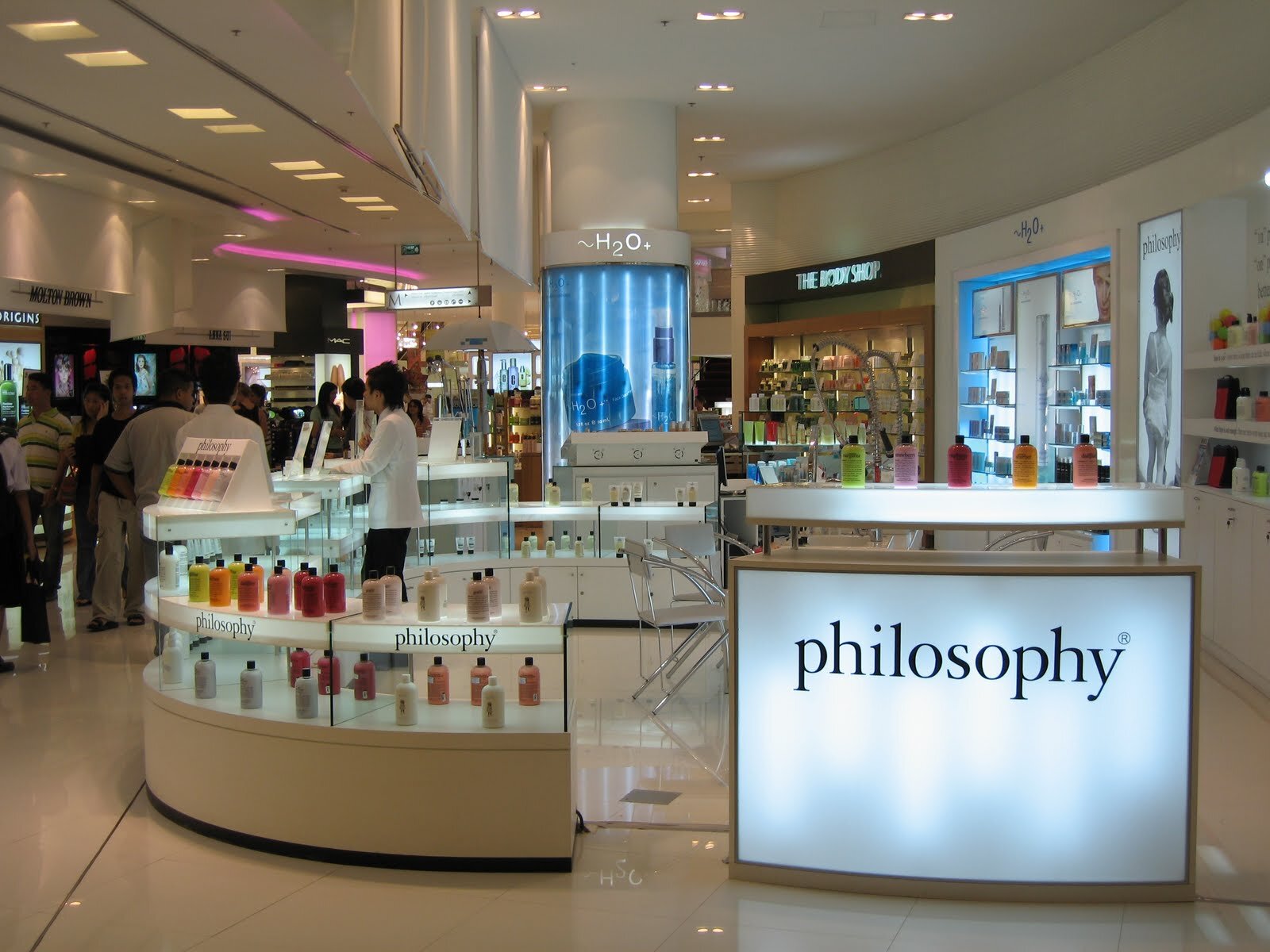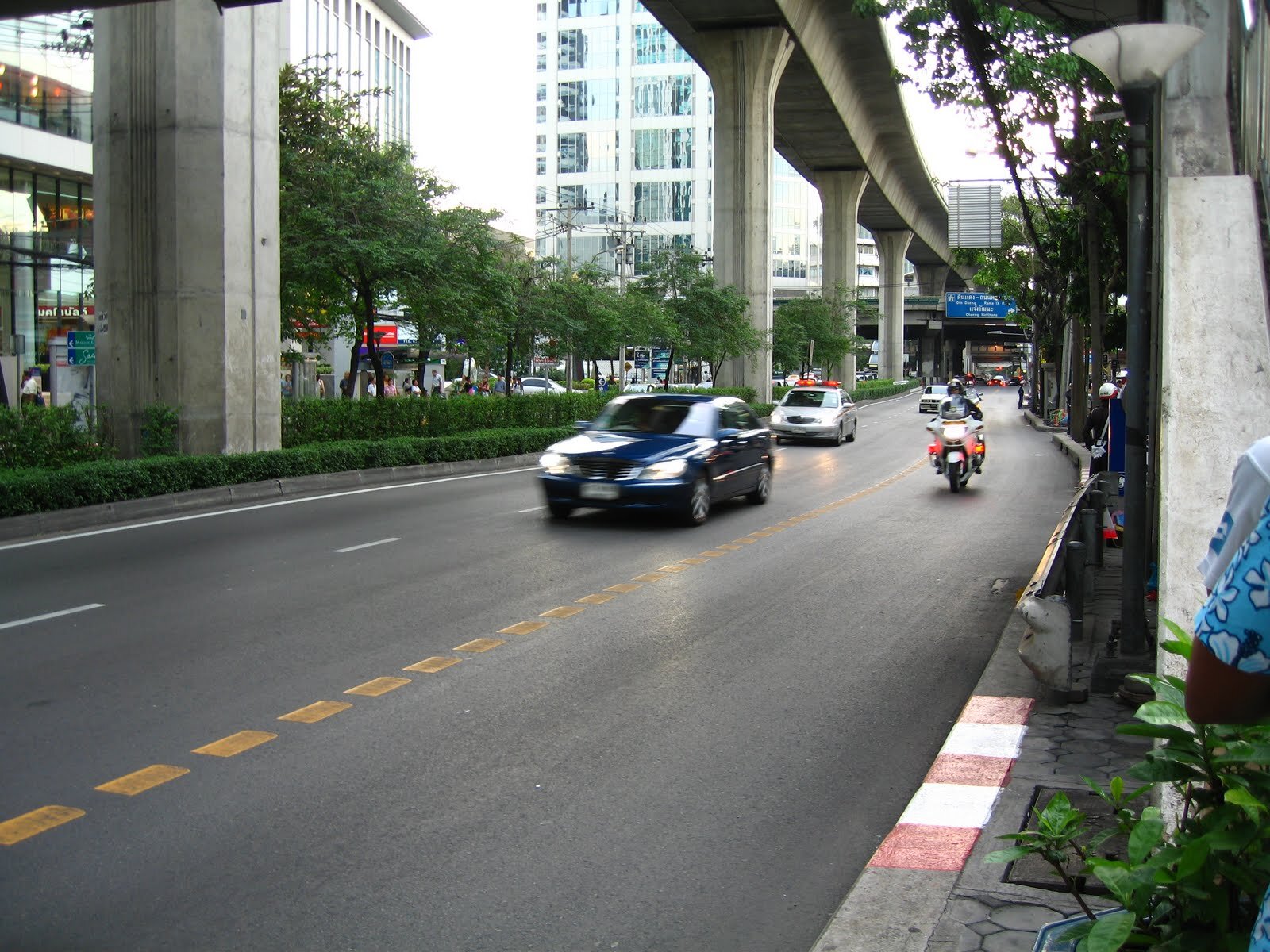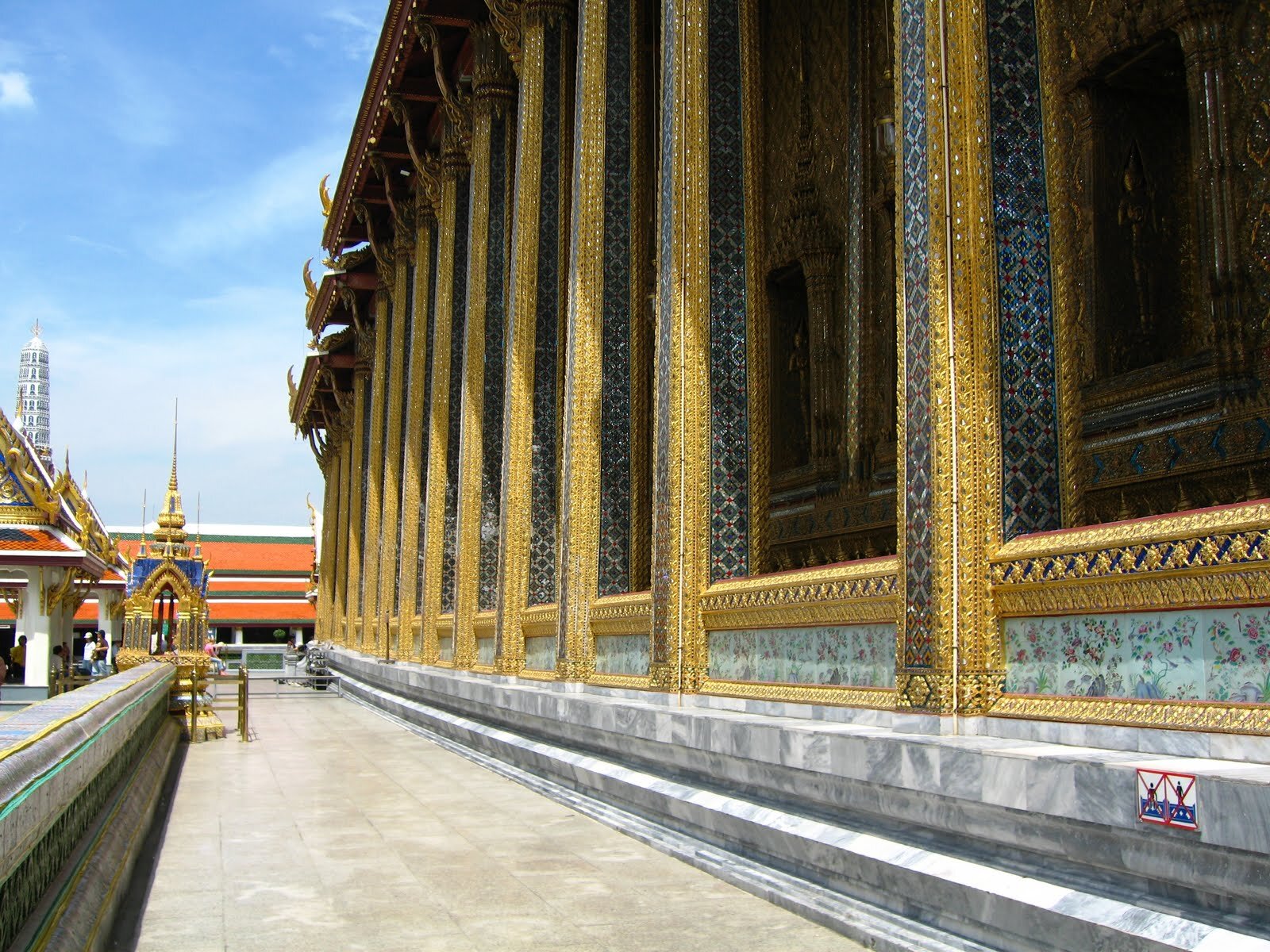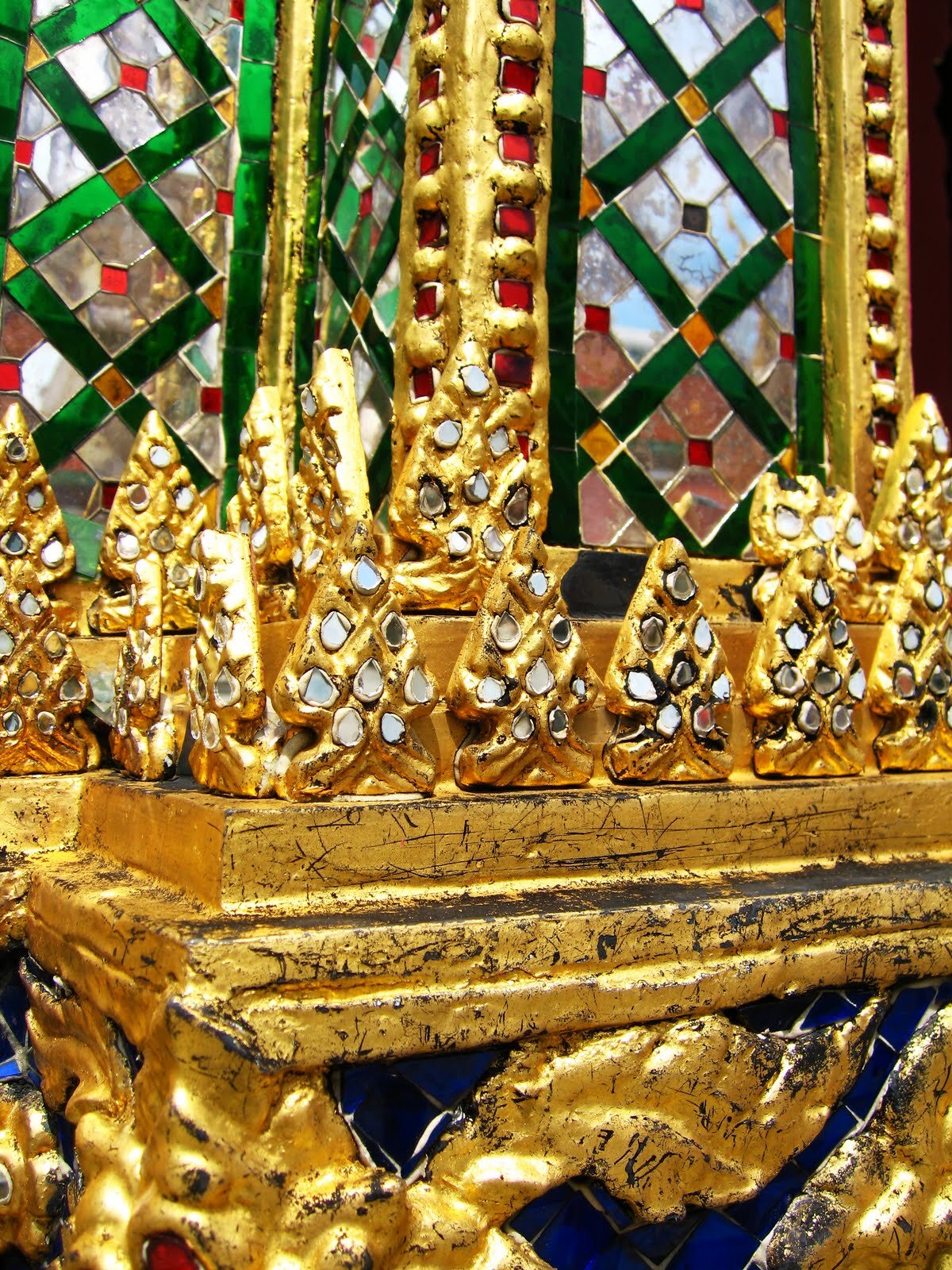Emerald Buddha
Bangkok has always amazed me for its similarity in appearance with Manila -- the deluge of Japanese cars, huge shopping malls, a flyovers like noodles, rice-based meals, even the trees look similar. Despite looking alike, Krung Thep (Bangkok's Thai name) carries such a strong and unique Asian charm that it has become the most popular jump-off point in the Southeast Asian backpacker circuit.
On my way to the Grand Palace, a policeman stopped me from crossing the street because the car entourage of the royal princess was about to pass. I said I'll use the overpass instead but he didn’t allow me. Thais give significant importance to one's head so to show respect, one’s feet must never be above another person’s head. It's considered an insult to hit or to even just touch someone’s head. To walk on the overpass while the princess was passing under it is tantamount to putting my feet over her head. What a coincidence it was, "meeting" the princess! The Grand Palace used to be the residence of the Thai royal family.
Outside the Grand Palace gate, I met a friendly tour guide who told me that the Palace was closed for day because the King was entertaining a royal guest. He suggested that I take a tuk-tuk to this other temple, visit a Thai art exhibit and then make my way to Khaosan Road. I pulled out my map, he scribbled his directions, encircled the landmarks and he even wrote down his name.
At the snap of his finger, a tuk-tuk arrived right in front of us. Grateful, I said goodbye and left. I went to the temple he suggested but it was small and almost empty. There was a dubious-looking monk inside who taught me how to put golden paper leaves on the Buddha -- a temple ritual. The Thai art exhibit was dark, dusty and the sales ladies were such hard-sells. I felt harassed into buying but I kept my cool and politely declined. When I arrived at my hostel that night, I asked the receptionist who the visitor of the King was. He replied, "The King didn't have any guests. And besides, he doesn't live in the Grand Palace."
The following day, again outside the Grand Palace at the exact same spot, I met the same tour guide again. I greeted him, "Hey! The King didn't have any visitors yesterday. What were you talking about?"
"I'm sorry, I don't think we've met," he replied with a certain discomfort.
"We met yesterday. You even wrote on my map!" I pointed at his name on my map.
"I'm sorry, I don't know you. Please leave me alone," and he immediately left.
Apparently, it's a common modus operandi for "friendly tour guides" to mislead innocent tourists into visiting "exhibits" for a commission from the exhibitors.
Everyone was an accomplice. The tuk-tuk driver received gas vouchers from the exhibitors for taking me there. The "tour guide" received a small amount from the tuk-tuk driver for making me ride his tuk-tuk. I got punked. Oh well. I continued on with my plans anyway -- the Grand Palace.
Inside the Grand Palace is Wat Phra Kaew which is considered to be the most sacred Buddhist temple in Thailand. This temple houses the Emerald Buddha which is disputed by the Laotians, the Cambodians and the Thais. Each claims that they should keep the Emerald Buddha in their homeland because it was stolen from them. Wars were waged for the possession of this icon. Until today, this is a sensitive issue for the three.
When I went inside the main hall where the icon was displayed, I was greeted by men and women of all ages peacefully chanting while seated on the cold marble floor. To show respect, visitors are required to dress conservatively and to remove their shoes. Everyone had to sit in such a way that their soles were not facing the Buddha. When confronted by an unfamiliar sight or experience, I tend to quickly draw my camera to capture it. But sitting in front of this historic green statue, hearing the rhythmic chanting of Thai prayers and witnessing the possessed expressions of the worshipers, I knew that taking a snapshot would ruin the encounter. I kept my camera inside my bag and relished the moment.























